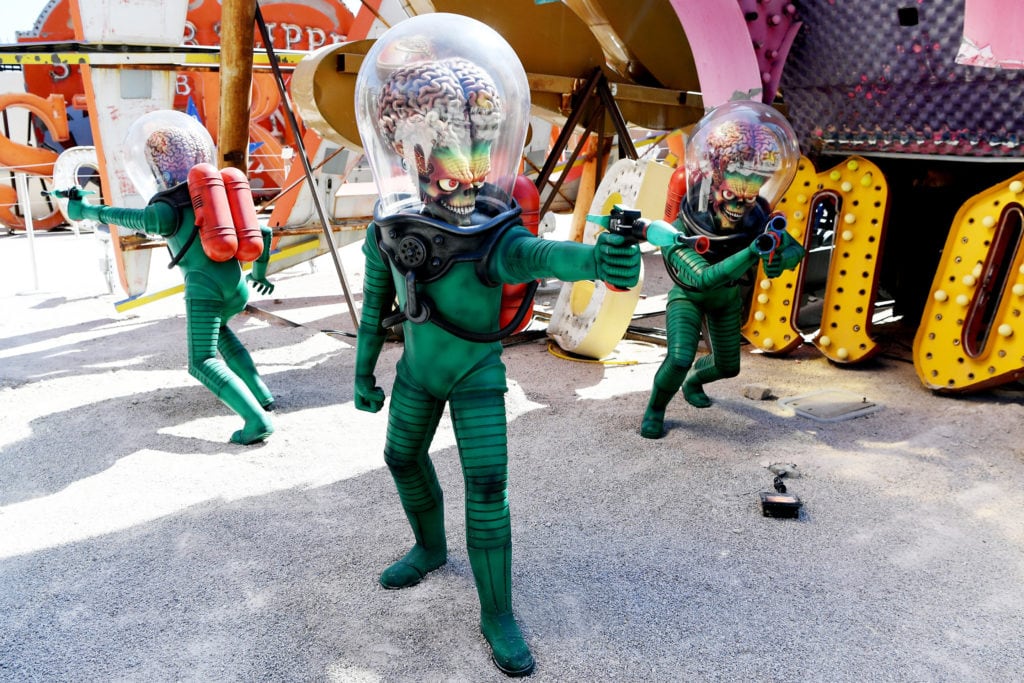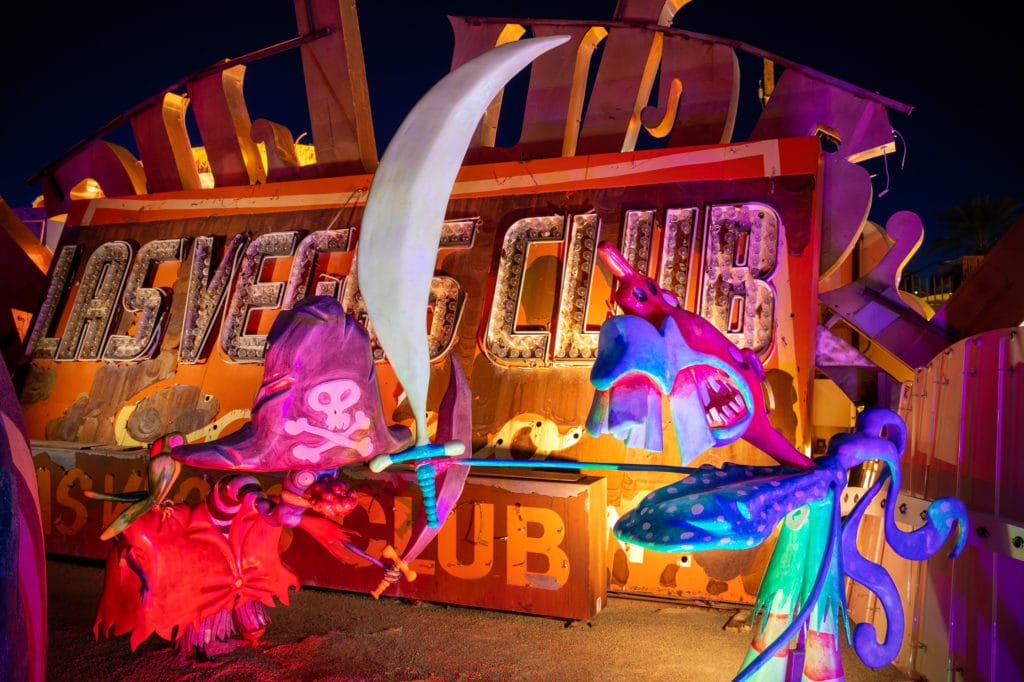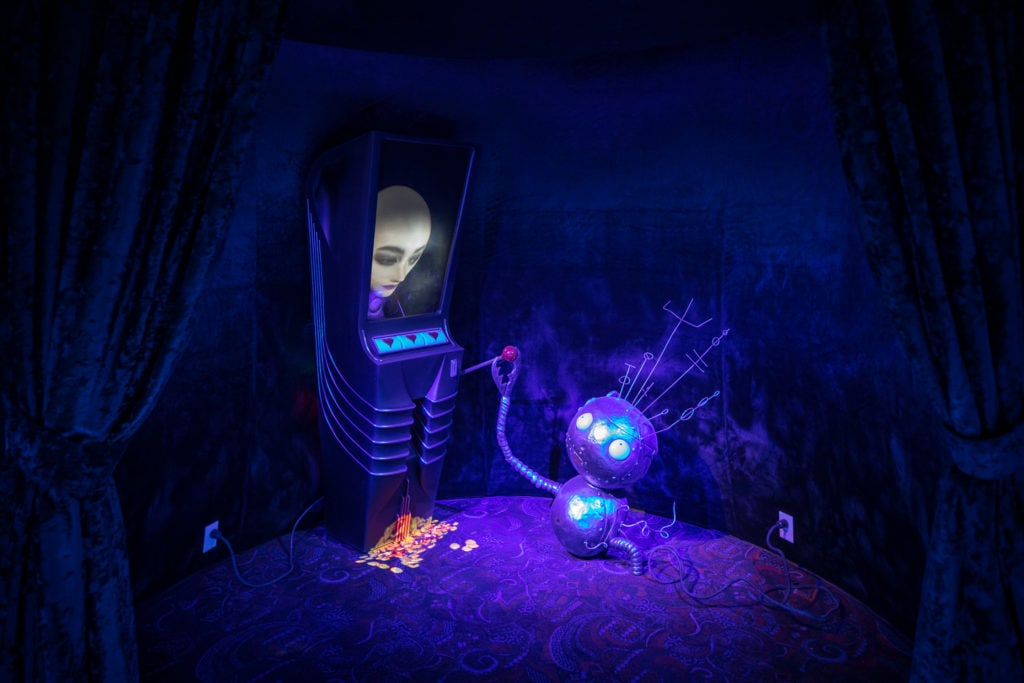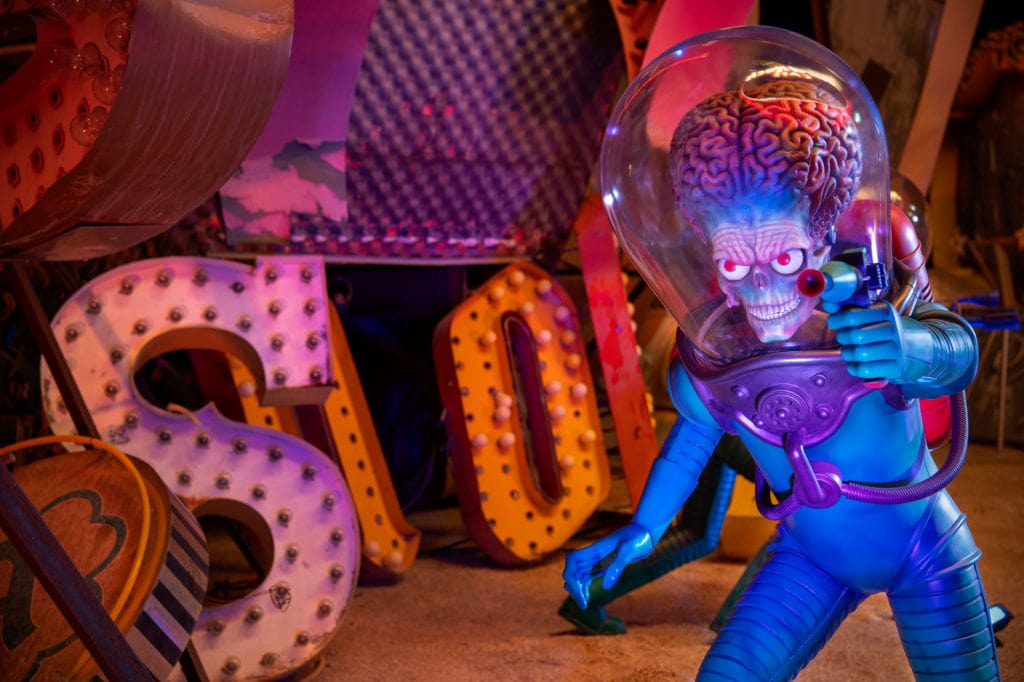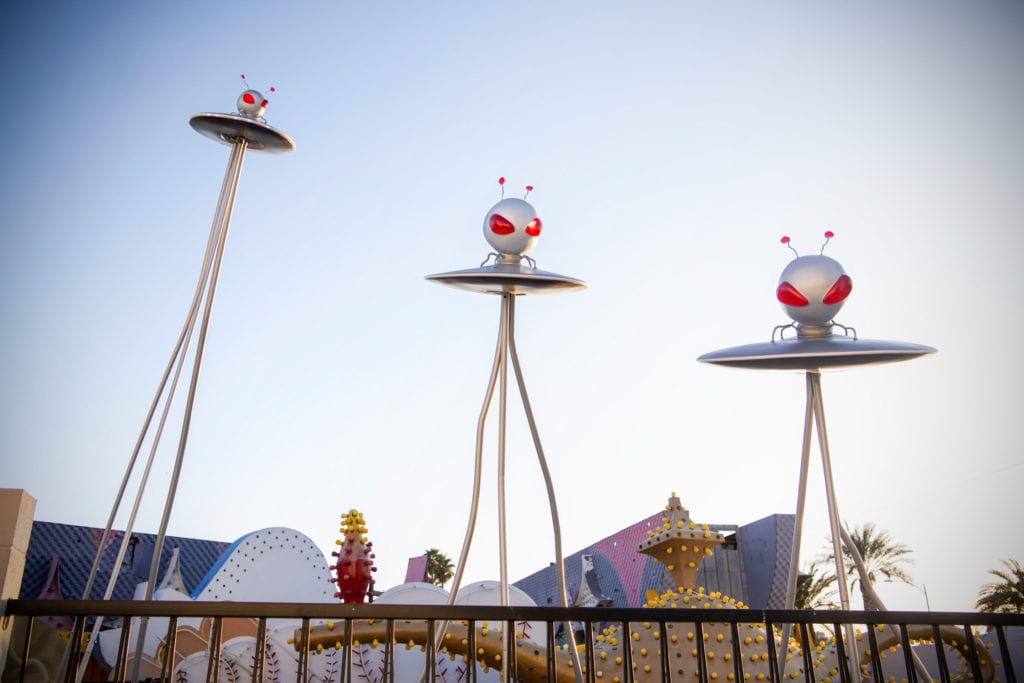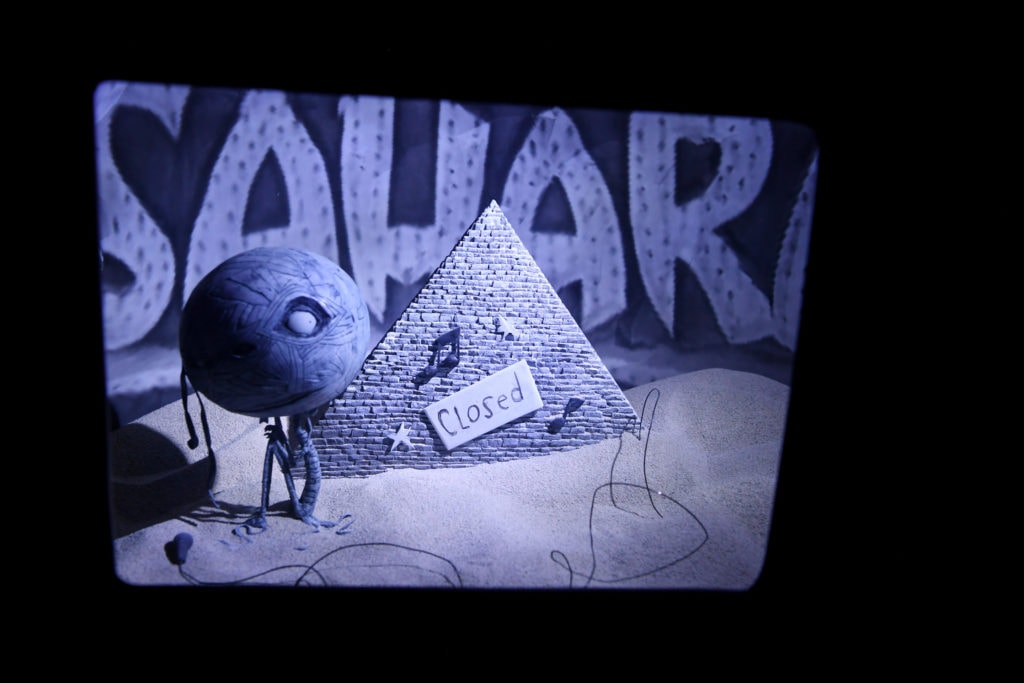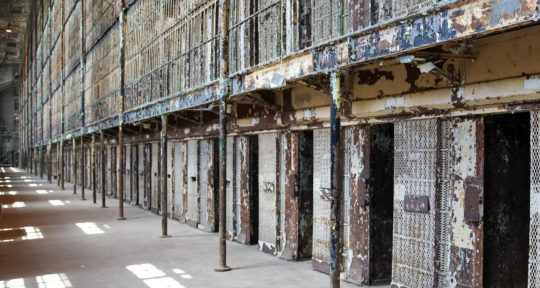Among remnants of neon signs from Las Vegas’ past—odd letters strewn about, a hanging display of mid-century starbursts—I come across three Martians in space suits, pointing their weapons straight at onlookers. Around the corner, a group of lanky, contorted monsters wearing pirate costumes battle it out with swords and grimacing faces.
Mid-century neon signs are par for the course at the Neon Museum, but the space aliens and pirates are new. They are just a handful of the sculptures that make up Lost Vegas: Tim Burton @ The Neon Museum. Since it opened on October 15, more than 100,000 people have visited the filmmaker’s exhibit. “The response has been unbelievable,” says Dawn Merritt, the museum’s vice president and chief marketing officer. “We’re averaging about 2,000 people a day.”
Three armed Martians from Mars Attacks!. | Photo: Denise Truscello/WireImage A group of monsters in pirate costumes. | Photo courtesy of the Neon Museum One of several installations on display inside a dark dome. | Photo courtesy of the Neon Museum
But some visitors might not see everything included in the exhibit. Burton’s pieces are hidden throughout the Neon Boneyard, where the museum’s permanent collection lives, and some are specifically designed to blend in with their surroundings.
“That was a conscious decision that [Burton] made. He wanted people to discover these pieces that he created for us,” Merritt says. “Some people are very quick at spotting them and others are like, ‘I didn’t see everything.’”
While the armed Martians are easily recognizable from Mars Attacks!—Burton’s 1996 take on low-budget sci-fi flicks from the 1950s and ‘60s—many of the other pieces are site-specific installations. As I walk through the yard, some sculptures and signs are obvious Burton creations—like “Stain Boy,” a hollow-eyed cartoon character that sits next to an eerie neon letter poem—while others are more difficult to spot.
To help visitors get the most out of the experience, the Neon Museum offers a brochure and an app that both provide more information about the pieces, where they are located, and what inspired them. “Look for the hidden Easter eggs,” Merritt says.
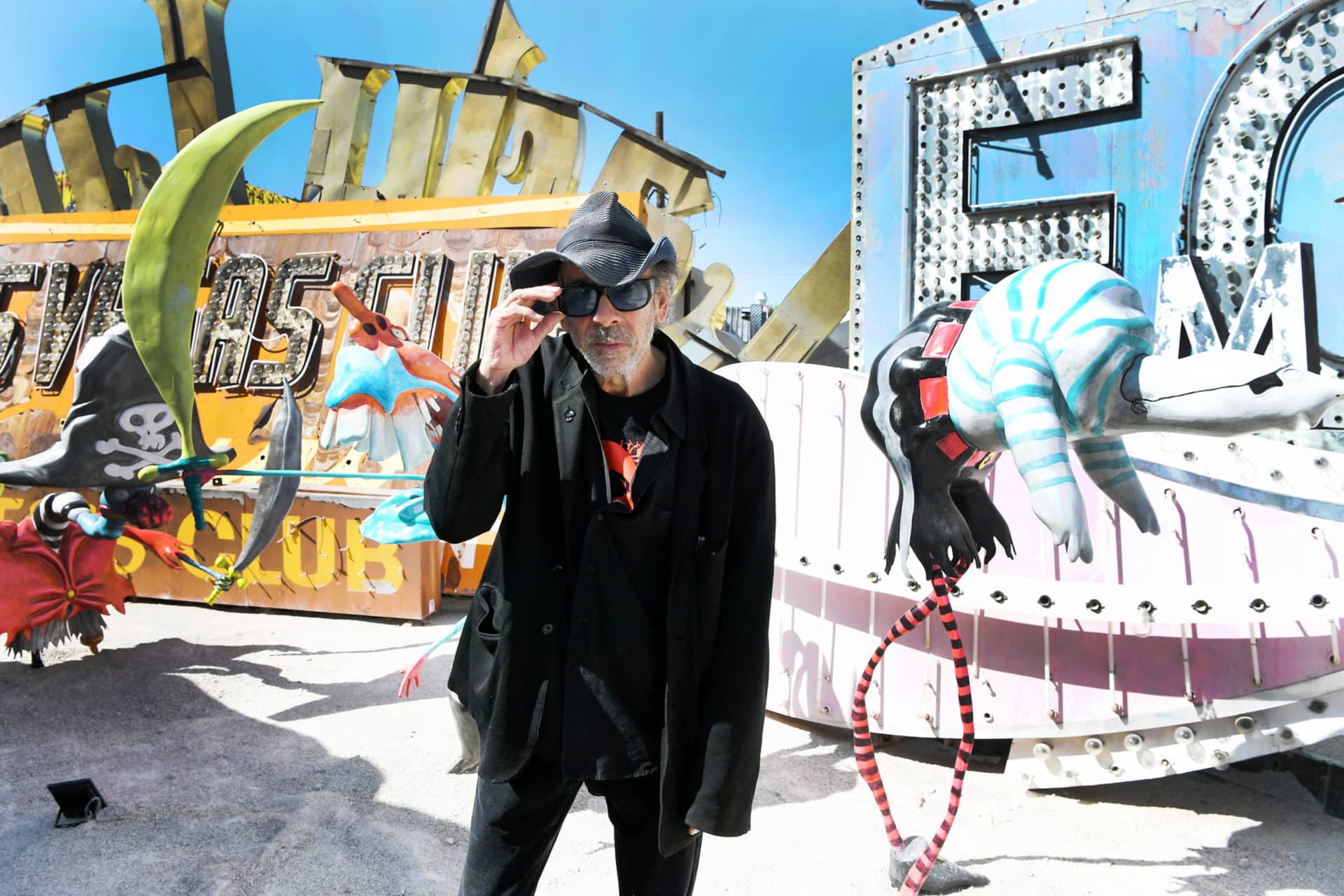
The old days of Vegas
Tim Burton may be known primarily as the man behind dark and eccentric films such as Beetlejuice, Edward Scissorhands, and The Nightmare Before Christmas. But he’s also written poetry and published a handful of books of drawings and other artworks. His Neon Museum exhibit incorporates all of this—from sculptures and videos to drawings and poems.
It’s a rare view into the mind of one of Hollywood’s most original creators; Burton’s last exhibit in the U.S. was held in 2011, at the Los Angeles County Museum of Art. In 2009 and 2010, his retrospective at MoMA in New York displayed more than 700 pieces, including drawings, paintings, photos, puppets, and costumes.
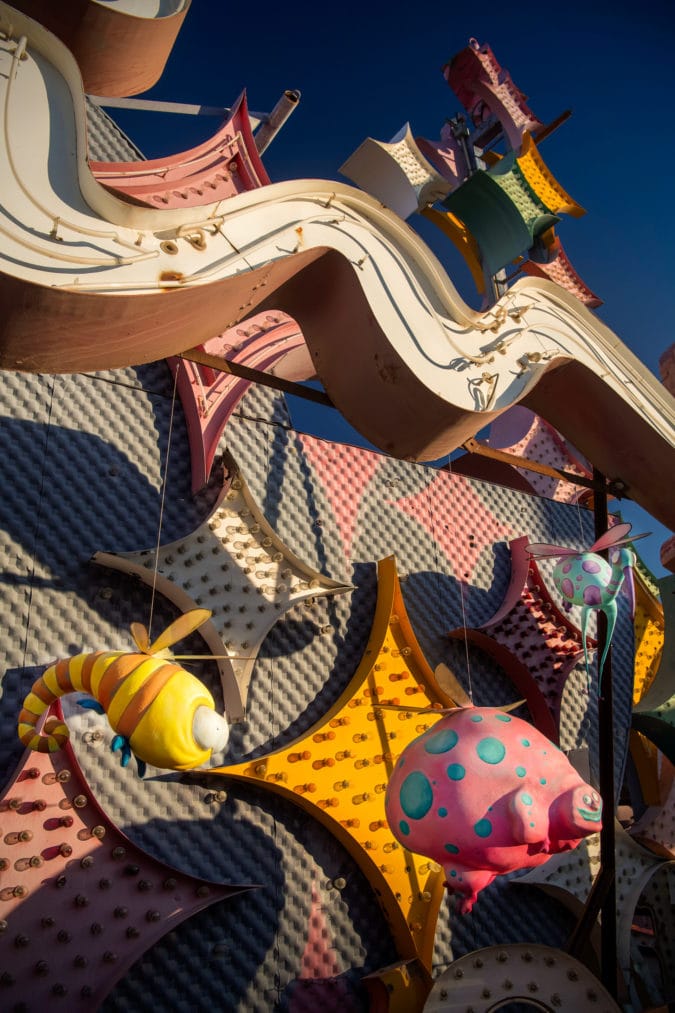
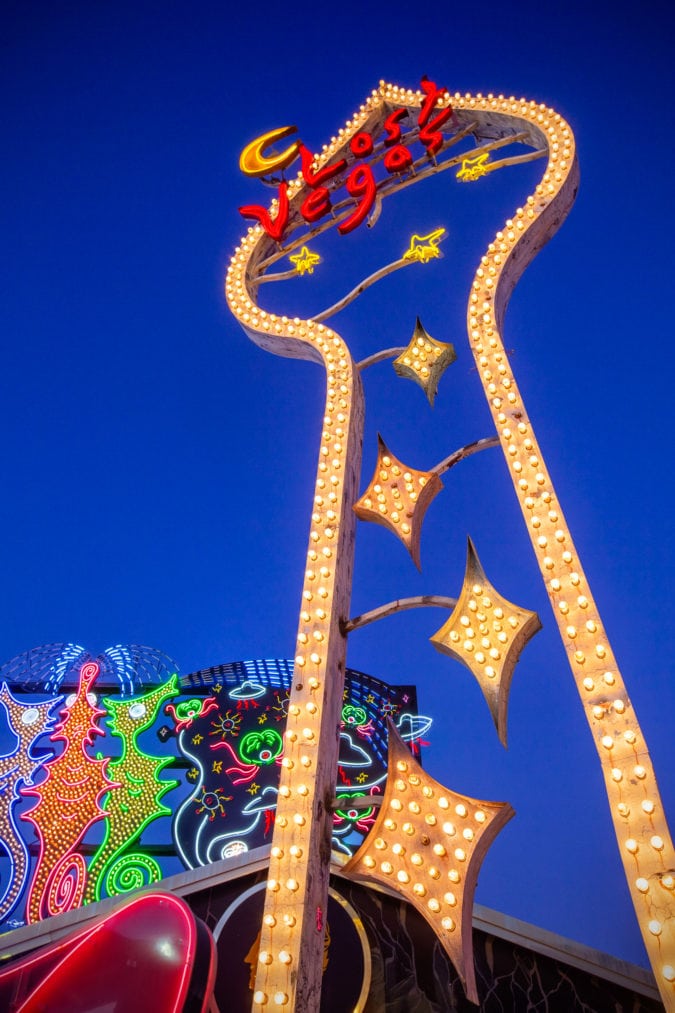
The Neon Museum exhibit is no less fantastical than Burton’s movies and previous showcases. As a child growing up in Burbank, California, Burton’s family used to make frequent visits to Las Vegas. This was before iconic hotels like the Dunes and the Sands were demolished to make room for the Bellagio and the Venetian, developments that still stand on the Strip. Lost Vegas is an ode to the old, gritty days of Sin City and its neon heritage.
“It’s a part of Vegas that you just don’t stumble across anymore, because, frankly, they imploded everything,” Merritt says. “The Neon Museum came along and became a haven for these signs and for the historic aspect that they represent.”
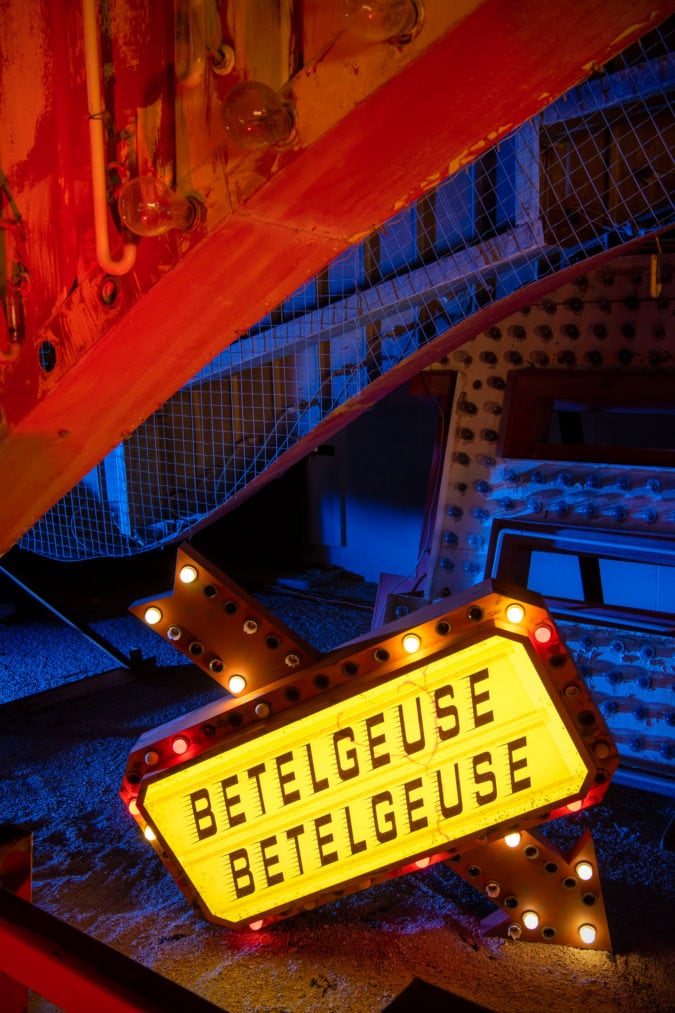
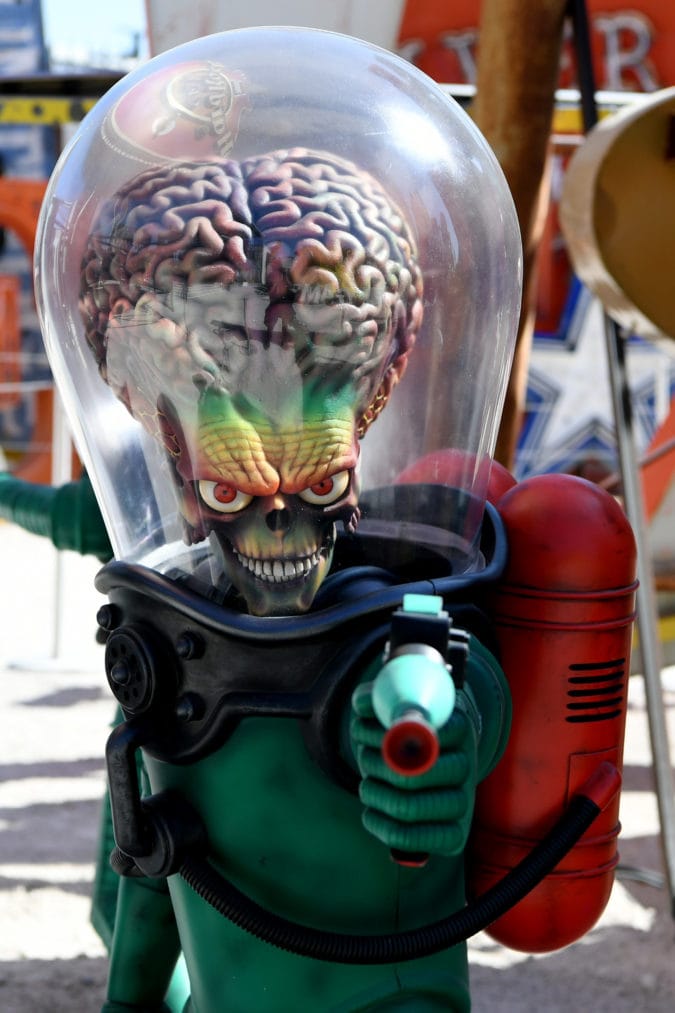
According to Jim, one of the many museum staff members stationed throughout the Neon Boneyard during my visit, the current collection is organized “pretty much like the geography of the city,” and placed along a U-shaped path. Downtown Fremont Street area signs are grouped together, followed by Motel Row. On the other side are retired signs from hotels and businesses located on the Strip.
While most of the Burton pieces are placed throughout the permanent collection, some of his larger installations have their own dedicated spaces. A large, black box is positioned right outside the Boneyard. Inside it is an interactive experience where visitors are encouraged to bring out their inner performers. “Go in and bring your singing voice,” Jim says.
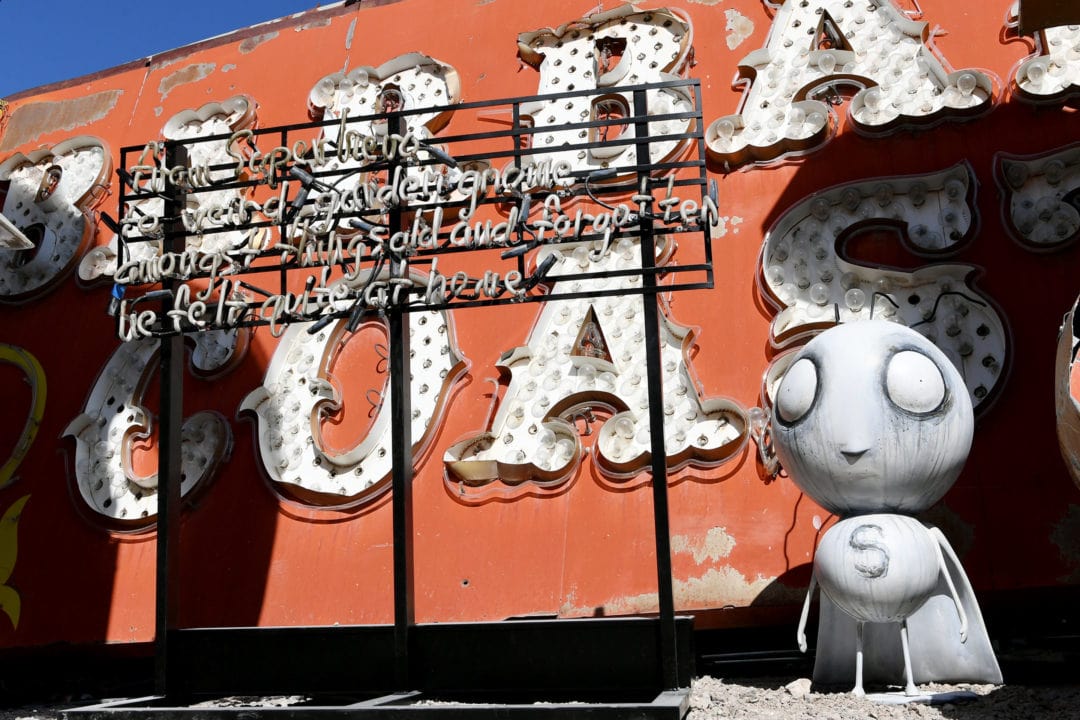
Preserving the glitz
The Neon Museum was founded in 1996 as a non-profit organization dedicated to preserving and displaying iconic Las Vegas neon signs. In the center of its permanent exhibit is an 80-foot-tall Hard Rock Café guitar that towers high above the Neon Boneyard. It’s one of only a handful of signs in the museum’s collection that have been restored and light up.
“We did fundraising for about a year before we actually started to work on it because it’s $350,000 to restore that sign,” Merritt says. “And then they had to recreate everything from the beginning, because the sign was 25 years old and technology has changed so much.”
One of Burton’s “Space-suited Martians.” | Photo courtesy of the Neon Museum “Flying saucers” is just one of the space-themed installations in the exhibit. | Photo courtesy of the Neon Museum A display inside the dome. | Photo: Denise Truscello/WireImage
But there are plans to restore more signs, as well as expand the museum. Merritt points out a building on the other side of Las Vegas Boulevard from the current location. “That is our building now. We have just acquired it from the City of Las Vegas, so we’re going to be expanding across the street,” she says. “We’re planning to have a neon glass blowing demonstration in there where you can watch neon glass signs being made—and maybe even sign up to take a class to learn how to do it yourself.”
Interior demolition has already begun, and museum employees are hoping to start moving their offices into the new building by the end of 2020. But for now, the main focus is on Lost Vegas, which runs until February 15, 2020. “We will probably be partnering with some organizations in town to host traveling exhibitions,” Merritt says. “But we don’t have a big plan for topping Tim Burton at this time.”
If you go
Lost Vegas is on display at the Neon Museum through February 15, 2020. Advanced tickets are required.
